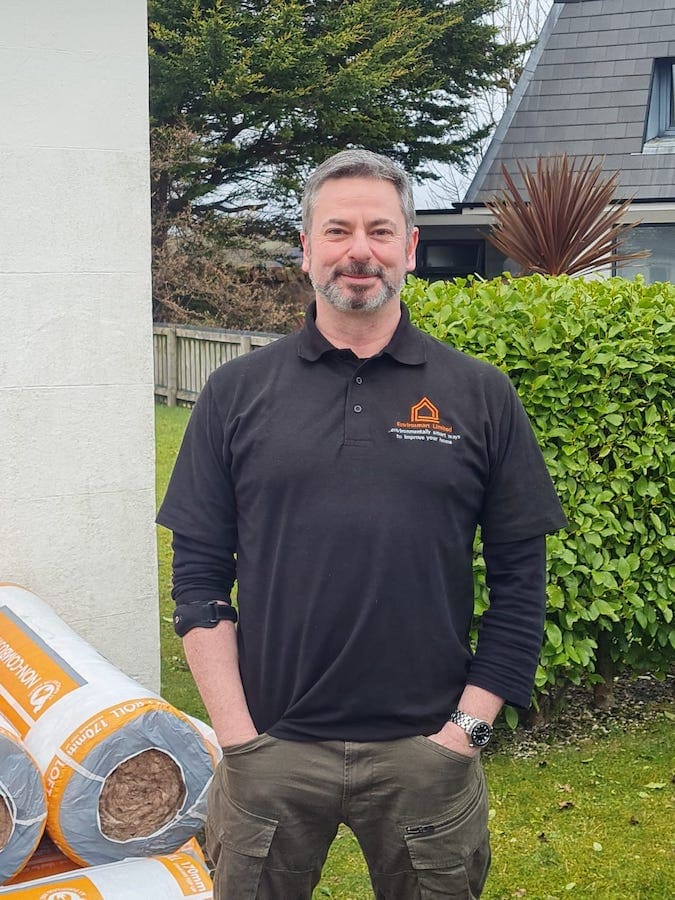Home Insulation Costs Scotland 2023

Intro
Insulating your home is becoming increasingly important as energy bills in Scotland continue to rise. With annual bills projected to surpass £3,000 in April 2023, finding ways to lower energy costs is crucial. Home insulation is a highly effective method to achieve energy efficiency and reduce expenses. In this guide, we will explore the costs associated with home insulation, factors that influence pricing, and the available grants for homeowners.
How Much Does Insulation Cost?
The cost of insulation can vary depending on several factors, such as the size and type of your home, as well as the existing insulation. For instance, insulating an older building with solid walls will generally be more expensive than insulating a modern home with cavity walls. On average, insulation costs range from £1,400 to £10,000.
The following table provides the average costs for popular insulation types in one and three-bedroom homes:
Click on the links below for more information including costs for each of the following types of insulation:
* Loft Insulation Cost Scotland
* Underfloor Insulation Cost Scotland
* Internal Wall Insulation Cost Scotland
* Roof Insulation Cost Scotland
* Room in Roof Insulation Cost Scotland
* Cavity Wall Insulation Cost Scotland
* External Wall Insulation Cost Scotland
Factors Affecting Insulation Costs
Several factors influence the cost of insulation, including:
- Material: The choice of insulation material significantly impacts the total cost. For example, using spray foam insulation for your roof is more expensive compared to fibreglass. Higher-quality insulation materials often come at a higher price, but they offer better results. Spray foam insulation, for instance, provides up to three times better thermal performance than fibreglass.
- Insulation Method: The installation method also affects the overall cost. Installing fibreglass insulation can often be a DIY project, saving you the expense of hiring a professional. However, spray foam insulation requires specialised application techniques, making it essential to hire a professional. Attempting a DIY approach with spray foam insulation can result in damage, unpleasant odours, and ineffective insulation.
- Grants: There are various national and local grants available to assist homeowners in reducing insulation costs. It is advisable to explore potential grants in your area. The London Warmer Homes scheme, for instance, offers free insulation and ventilation improvements for lower-income residents. The York Home Upgrade Grant (HUG) provides funding for loft, cavity wall, and attic room insulation to York residents.
Is Home Insulation Worth the Investment?
Investing in home insulation can yield significant benefits, particularly if you can allocate funds to insulate specific areas of your home. Insulating your loft, for example, can reduce heat loss by up to 50% and save you approximately £255 per year. Although the cost to insulate a loft in a three-bedroom semi-detached home with spray foam insulation is around £3,588, the insulation can last 80 to 100 years, making it a wise long-term investment.
Cavity wall insulation, with an average cost of £1,200 for a three-bedroom semi-detached home, can save you approximately £285 per year. In this case, you would recoup your investment in just over four years, making it a financially sensible decision. However, it is important to be aware of common issues related to cavity wall insulation before proceeding with the installation.
What Is the Most Affordable Insulation Type?
Pipe insulation is the least expensive type of insulation available, although it offers relatively minimal benefits. Insulating your pipes can save you approximately £3 per year, but the cost to cover all required pipes averages around £25, making it a worthwhile investment.
Here are a few cost-effective tips for insulating your home without breaking the bank:
- Draught-proof your home: Identify areas where heat can escape, such as pipework, windows, doors, and loft hatches. Use draught excluders, which cost around £10, to seal these gaps and save up to £50 per year on energy bills.
- Rearrange furniture: Ensure that sofas and armchairs are not blocking radiators, as this restricts the circulation of hot air and reduces their effectiveness. Moving furniture away from radiators can make your rooms feel warmer.
- Consider carpet underlay: Up to 15% of heat loss in a home occurs through the floor. Installing carpet underlay, which costs £3-8 per square metre, can help reduce this heat loss and save you up to £75 per year.
Are There Government Grants for Insulation?
Yes, there are several national grants available to help homeowners reduce the cost of insulation:
- Energy Company Obligation (ECO4): Residents in England may be eligible for grants towards loft insulation and cavity wall insulation, depending on certain requirements.
- Warmer Homes Scotland: This scheme provides grants for loft insulation, including spray foam insulation, and cavity wall insulation to residents in Scotland.
- Nest: Homeowners in Wales can access grants for loft and cavity wall insulation through the Nest scheme. However, spray foam insulation is currently not available under this program.
In addition to these national grants, there may be local grants specific to your area. For example, the York Home Upgrade Grant and the London Warmer Homes scheme offer funding for various home improvements, including insulation, with grant amounts ranging from £5,000 to £25,000.
Will Home Insulation Become More Affordable in the Future?
While it is challenging to predict the exact affordability of home insulation in the future, it is clear that prices must continue to decrease for the UK to achieve its net-zero emissions goals. With a significant number of older homes lacking proper insulation, there is a pressing need for improvement.
The removal of VAT on home insulation in April 2022 was a positive step in reducing costs. However, the UK still has work to do to make insulation more accessible for households facing financial constraints.
Summary
Although the removal of VAT on home insulation has helped alleviate costs, there is still room for improvement in making insulation more affordable for all. Currently, the most effective forms of insulation can be expensive, making it difficult for many individuals and families to invest in these solutions.
Spray foam insulation is a highly efficient option with excellent thermal properties and a lifespan of 80 to 100 years. If you are considering spray foam insulation, you can fill out a simple form to receive bespoke quotes from trusted suppliers.
In the meantime, homeowners can explore cost-effective measures such as draught-proofing, rearranging furniture, and using pipe insulation to improve energy efficiency without incurring significant expenses. Additionally, national and local grants are available to help reduce insulation costs and make energy-efficient homes more accessible to all.
If you enjoyed this post, here is a more specific post about insulation costs in 2023 for spray foam insulation. Enjoy!


As someone working in the insulation industry, I found this piece to be particularly enlightening and relevant to my line of work. Thanks to the author for delivering such a comprehensive and enjoyable piece of content.
Thank you Peter, it seems you have lots of products on https://insulationgo.co.uk/ as well